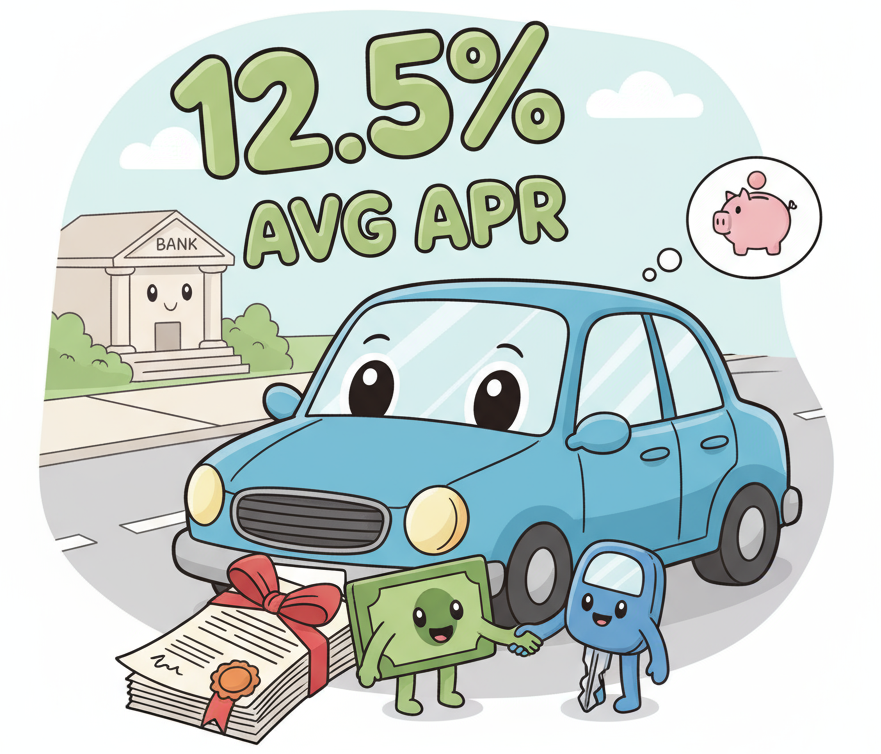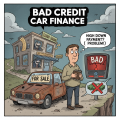Are you gearing up to buy your first car or upgrade to a new one? One of the most important financial factors to understand is the average APR financing car rates in 2026. The Annual Percentage Rate (APR) directly affects how much your car loan will cost you over time, influencing your monthly payments and overall financial health.
For young professionals, students, entrepreneurs, and risk-takers worldwide, mastering how APR works can lead to smarter financing decisions, better budgeting, and more affordable loans. This guide walks you through the latest APR trends, detailed loan comparisons, credit tips, calculators to estimate your costs, and practical steps to secure the best rates.
What is APR and Why It Matters in Car Financing
APR represents the total yearly cost of borrowing, including interest and lender fees, expressed as a percentage. Unlike the simple interest rate, APR gives a more comprehensive picture of what you pay, making it easier to compare loan offers.
Why does APR matter to you? Even a 1% difference can result in hundreds or thousands more paid over a typical 5-year auto loan. Young professionals with limited budgets must pay close attention to APR to avoid long-term financial burdens.
Current Average APR Trends in 2026
New Cars vs Used Cars APR Rates
In 2026, the average APR for:
-
New Cars: between 4.2% and 6.1% depending on your credit, loan term, and region.
-
Used Cars: typically higher, ranging from 6.5% to 9.3% or more, reflecting increased lender risk for pre-owned vehicles.
Impact of Credit Score on APR
Your creditworthiness remains the biggest lever for lowering APR:
| Credit Score Range | Typical APR Range (New Cars) | Typical APR Range (Used Cars) |
|---|---|---|
| Excellent (750+) | 3.5% – 5.0% | 5.0% – 7.5% |
| Good (700-749) | 4.5% – 6.0% | 6.0% – 8.5% |
| Fair (650-699) | 6.5% – 8.0% | 8.5% – 11.5% |
| Poor (600-649) | 9.0%+ | 12%+ |
Improving your credit score by 50 points can reduce your APR by about 1% — a significant saving over time.
Regional and Global Variations
-
United States & Canada: Moderate APRs due to competitive markets, typically 4%-7% for new cars.
-
Europe: Financing often includes OEM (car manufacturer) incentives lowering APR.
-
Emerging markets: Higher APRs ranging from 10%-15% due to inflation and credit risk.
How to Secure the Best APR for Car Financing
Improve Your Credit Score
-
Pay down high-interest debts before applying for loans.
-
Avoid new credit inquiries within 3 months of application.
-
Set up automatic payments to avoid missed payments.
-
Regularly review your credit report for inaccuracies with free tools like Credit Karma.
Choose the Right Loan Term
-
Shorter terms (24-36 months) offer lower APR but higher monthly payments.
-
Longer terms (48-72 months) lower monthly costs but increase overall interest paid.
Use an auto loan calculator to test different terms:
Estimated Loan Cost Calculator:
-
Loan Amount: $20,000
-
APR: 5%
-
Term: 36 months
Monthly Payment = P=r×PV1−(1+r)−n
Where:
r = monthly interest rate = 5%/12 = 0.004167
PV = loan principal = $20,000
n = total payments = 36
P=0.004167×200001−(1+0.004167)−36= approx. $599.42 per month
Total paid = $599.42 x 36 = $21,579.12 (interest = $1,579.12)
Compare Lenders
-
Credit Unions: Often provide the best APR through membership benefits.
-
Banks: Offer stability and ancillary benefits (auto insurance discounts).
-
Online Lenders: Quick approvals and competitive offers, but rates vary.
-
Manufacturer Financing: Check for promotional APR offers, especially on new cars.
Get at least 3 pre-approval offers to negotiate with dealerships effectively.
Common Pitfalls in Car Financing and How to Avoid Them
-
Obsessing over monthly payment instead of total loan cost.
-
Not factoring in additional fees or prepayment penalties in APR.
-
Financing add-ons (warranty, insurance) adjusting purchase price and APR.
-
Falling for “zero down” promotions which might increase APR or monthly payments.
The Future of Auto Loan APRs: What to Expect in 2026 and Beyond
Rising Interest Rates Impact
Due to inflation control efforts, central banks raised policy rates in 2025, causing a gradual increase in lending APRs. Consumers will face slightly higher borrowing costs in 2026.
Green Vehicle Incentives
Governments and manufacturers are incentivizing electric/hybrid cars with discounted APR loans and rebates, making these options more affordable.
AI in Lending
New automated credit analysis tools improve APR accuracy by assessing borrower risk in real-time, rewarding responsible credit use faster than traditional methods.
Frequently Asked Questions (FAQ)
1. What affects the average APR financing car rates?
Credit score, loan term, vehicle type, lender, and regional economy all affect APR.
2. Can my APR change after loan approval?
Usually no, unless you refinance or fail to meet loan conditions.
3. Is it better to lease or finance a car?
Leasing often has lower monthly payments but no ownership; financing builds equity but has higher payments.
4. How can I reduce the interest I pay over the loan?
Choose shorter loan terms and improve your credit score before financing.
5. Are automotive financing rates different for electric cars?
Yes, often lower APR incentives and government rebates reduce overall financing costs for green vehicles.
Conclusion & Strong Call to Action
Knowing the average APR financing car in 2026 empowers you to make well-informed decisions that save money and protect your credit future. Use this knowledge to improve your credit score, shop smartly, and choose financing options aligned with your budget and goals.
Don’t wait until you’re at the dealership—plan now, get preapproved, and drive confidently knowing you secured the best possible APR. Your financial well-being and dream car await your smart move today!











